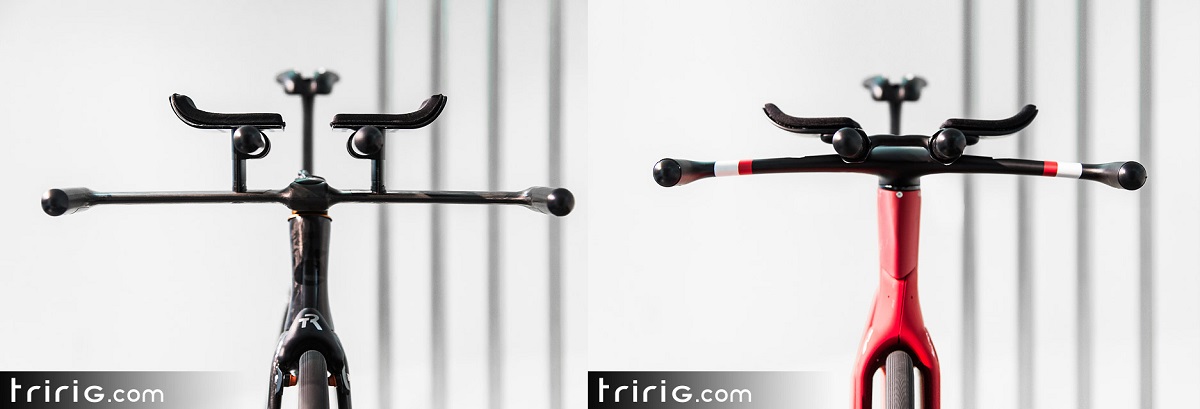Thinking of getting a new tri bike
All else being equal how much faster would a 2018 P5 be than a 10 year old P2C over 40k if any
If not much then I’ll stay with what I have
.
Thinking of getting a new tri bike
All else being equal how much faster would a 2018 P5 be than a 10 year old P2C over 40k if any
If not much then I’ll stay with what I have
.
If you have the P2C set up with wheels and bars as good as the P5’s, cable routing mod, 3T or later fork, then not much at all. Handful of seconds I’d wager.
My guess is less than 10w if the bike fits well. I’d say it might test similar to the Felt (control bike) that they used in the aero bike shootout: https://www.slowtwitch.com/Tech/Triathlon_Bikes_in_the_Age_of_Peak_Aero_6429.html
They got ~.005 CdA difference in that test, or 2-3% of total aero drag for most of us, and <1% in speed: https://drive.google.com/file/d/0B8RrY_TRtezdc2pYSHJ1cVllUjQ/view
And I think a well sorted P2C would fare better than the B series Felt in that test.
On the tririg site they. Post about testing a p2c with their aero bar and brake instead of the stock setup and got pretty much the same drag numbers as a p5…a much less expensive upgrade.
40-50s
.
That was a new p2, not a p2c.
And the frames were two different sizes. And they had different cockpits. It was not a frame-to-frame comparison.
If you make it look like this it’ll be faster than snot off a fried egg.
https://c1.staticflickr.com/9/8206/29796726415_f545a25a90_z.jpg
Arrgh, those shifters, my poor eyes!
I upgraded my p2c with tririg alpha x and omega brakes instead of buying new and man is she fast. It’s all about cable management and a clean front end.
There may also be a (potentially substantial) psychological speed boost.
And the frames were two different sizes. And they had different cockpits. It was not a frame-to-frame comparison.that was the point. They were showing that a well set up P2 could be as fast as a stock P5 and potentially at a lower price point.
And the frames were two different sizes. And they had different cockpits. It was not a frame-to-frame comparison.that was the point. They were showing that a well set up P2 could be as fast as a stock P5 and potentially at a lower price point.
What he meant was the P5 was a larger frame than the P2
For all we know that is the reason the P2 was just as fast and nothing to do with the add ins
Does seem strange to go to all the money and energy to do wind tunnel comparison and use two different size frames
Different geometries so maybe they were still set to the same fit coordinates? It just required a different size of p5 to do so. I don’t know, just speculating
The protocol section says the bikes were configured to the same fit coordinates, but there is clearly a lot more plastic in the airflow with the larger P5 frame. Seems like it would have made a crapton more sense to use the same size P2, but the logic for justifying the differences is a bit baffling.

I have a 2008 P3C that I wish someone could clean up with Di2.
The protocol section says the bikes were configured to the same fit coordinates, but there is clearly a lot more plastic in the airflow with the larger P5 frame. Seems like it would have made a crapton more sense to use the same size P2, but the logic for justifying the differences is a bit baffling.
Not that baffling: “For our tests with the P5, we used a 56cm bike (just slightly larger than the 54cm P2). Of course, the pad stack/reach were consistent for both setups. Using the larger frame size allowed us to keep the bars slammed for both bikes, and also put each bike’s aerobar in the middle of its adjustment range. The P5’s integrated Aduro bar does not allow for independent pad stack adjustment, only macro adjustments via the High-V equipment, or micro adjustments via stem spacers. As an alternative, we could have used a 56cm P2 and set up the Alpha X differently, which may or may not have had an effect on the results. However, I prioritized a mid-range bar adjustment, since that would represent a setup that would allow its rider the ability to adjust their position up OR down. In the end, since the positions were the same, and the bars were in the middle of their adjustment ranges, I’m satisfied that it’s a very fair and valid test. Again, I present all the information that went into these decisions so that the reader can draw their own conclusions.”
https://www.tririg.com/store.php?c=alphax&page=windtunnel_intro
If tall frames are so bad, shouldn’t we be getting very low stack frames and add aerobar risers to taste?

If tall frames are so bad, shouldn’t we be getting very low stack frames and add aerobar risers to taste?
Yes. That test was apples-and-oranges because of the two different frame sizes. Nick’s statement “In the end, since the positions were the same, and the bars were in the middle of their adjustment ranges, I’m satisfied that it’s a very fair and valid test” without any science to validate it is the baffler. He should know that he gave the P2 an aerodynamic advantage.
But your reasoning implies that we should all be on low stack frames, because adding height to aerobar risers is more aero than a taller headtube. Is this true?
About how many cm^2 of extra frontal area do you think the P5 has vs the P2 in the test, and what would be the approximate Cd of this added area?